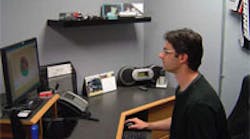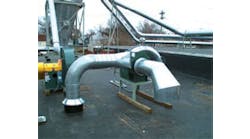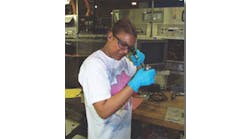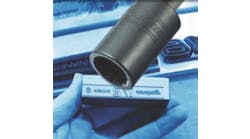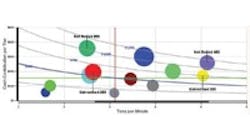Darren Murphy of Push speeds part programming with FeatureCAM software.
Growing market demands for new designs prompted dramatic changes at Push Industries, a developer of structural components for highend mountain bicycles. So, to secure long-term manufacturing stability and to get faster and timelier product development cycles, the company keeps all its CNC turning and milling operations in-house, from prototyping to production.
According to Push, every product comes from an idea formed during real-world use. The company transforms those ideas into shapes using 3D parametric solid modeling and finite element analysis computer software. The next step is manufacturing, and for that the company relies on FeatureCAM 3D CAM software from Delcam (www.delcam.com) of Salt Lake City, Utah, that allows it to automate machine motion simulation and data management and minimize part-programming times. The software makes creating and editing toolpaths for any CNC machine quick, easy and flexible, which is a big help to Push. It eliminates the need to develop or change the feature properties then generate or re-generate the toolpaths.
“In all of 2006, we were able to bring three new products to market. In 2007, in the first quarter alone, we’ve already implemented three new products. Up until FeatureCAM, our biggest problem had always been the complexity of our parts and finding subcontractors to machine the components in a timely manner at a reasonable cost. Now that we use FeatureCAM, we can go from design in SolidWorks software to tangible components in my hand in two days,” explained Darren Murphy, president of Push. And the company does not have to make big investments in large lots of parts.
Push usually makes from a few hundred to 1,500 components of a design every 90 days. The company now does all its machining in-house with quick turnarounds and excellent quality.
“Our problem was always getting things prototyped. We could design, but manufacturing was a big bottleneck. Without a tangible product, our designs were going nowhere. Now that bottleneck is gone, and we can manufacture at the same rate we can conceptualize products,” Murphy said. FeatureCAM’s featurebased machining lets Push create part programs using features that describe that part, from simple holes to complex pockets to turned grooves, and machining operations are automatically generated.
Feature-based machining frees Push from the time-consuming chore of creating and managing each machining operation.
Push also benefits from FeatureCAM software because it works extremely effectively with the shop’s design software. The last thing the shop wanted was a feature-based CAM software that did not communicate with SolidWorks, which the shop had been using for years and did not want to change. Murphy especially likes how changes made in SolidWorks automatically update in FeatureCAM.
